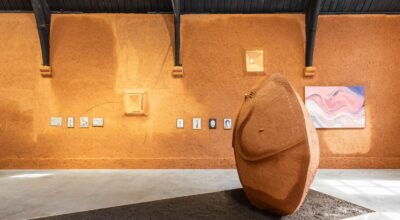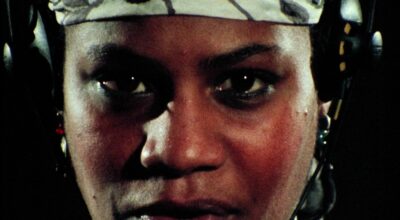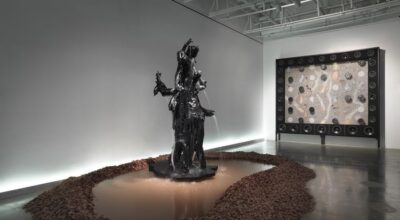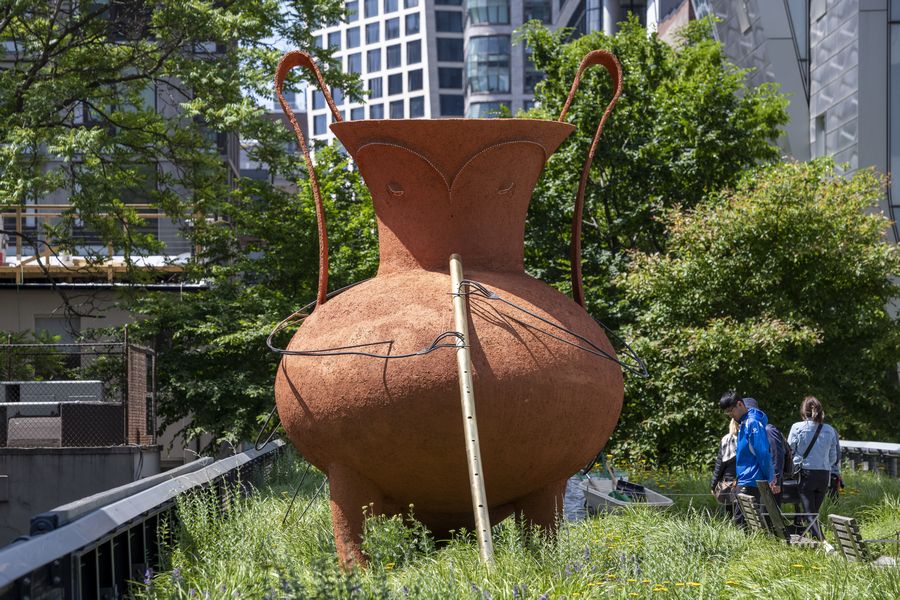
GABRIEL CHAILE: ART AND LIFE IN A TIMELESS TIME
Gabriel Chaile (b. 1985, San Miguel de Tucumán, Argentina) embarks into the origins of life itself rather than the origins of himself, his country, or a continent, with an assertive formal bent that contrasts neatly with the apparent primordial chaos. He performs this ad ovo, to use a well-known Latin idiom. It’s as though Salir del surco al labrar la tierra: delirios de grandeza II [Leaving the Furrow When Tilling the Soil: Delusions of Grandeur II] places us just before the first birth. The beginning of beginnings.
It seems likely that there was no one origin, but rather mutations, variations, and leaps, which is why we find ourselves in the prelude of multiple births instead of a single one. Hence, the exhibition title at Barro NYC, Time, Times and Half Time.
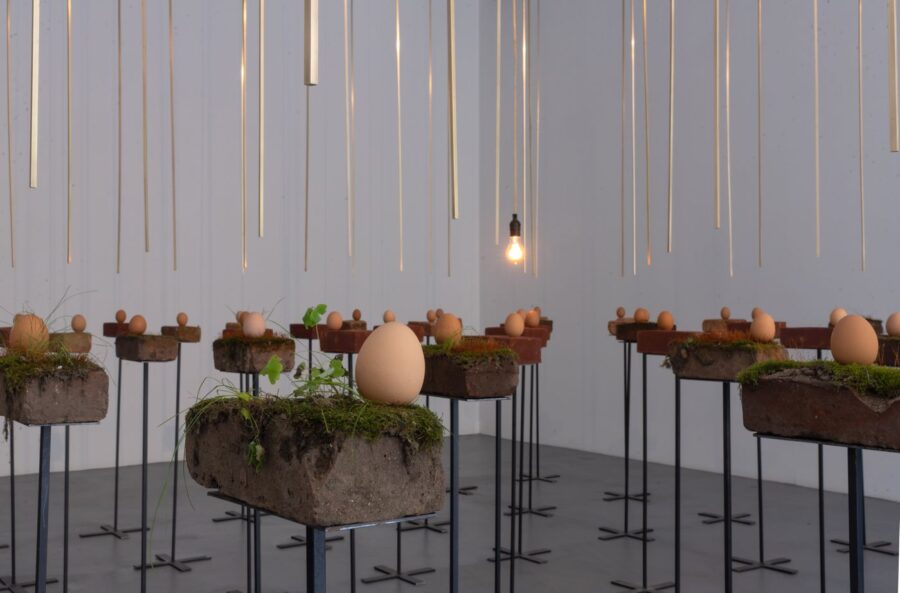

Following the time logic, the installation in the main room references prior works by Chaile, one of Argentina’s most prolific artists (and the expression is not a coincidence) and a notable presence at the last Venice Biennale.
Life occurs before there is life, or just when life is about to appear in the world, although there is no world without life, at least without human life. Chaile approaches these issues with sobriety, without excess, as if attempting to avoid what is expected of him.
He aims to point out how life flourishes despite the odds and perseveres in the face of adversity. Isn’t there a ridiculous nuance in the evolution of life? The conditions were right for it not to occur, yet the primordial light was lit.
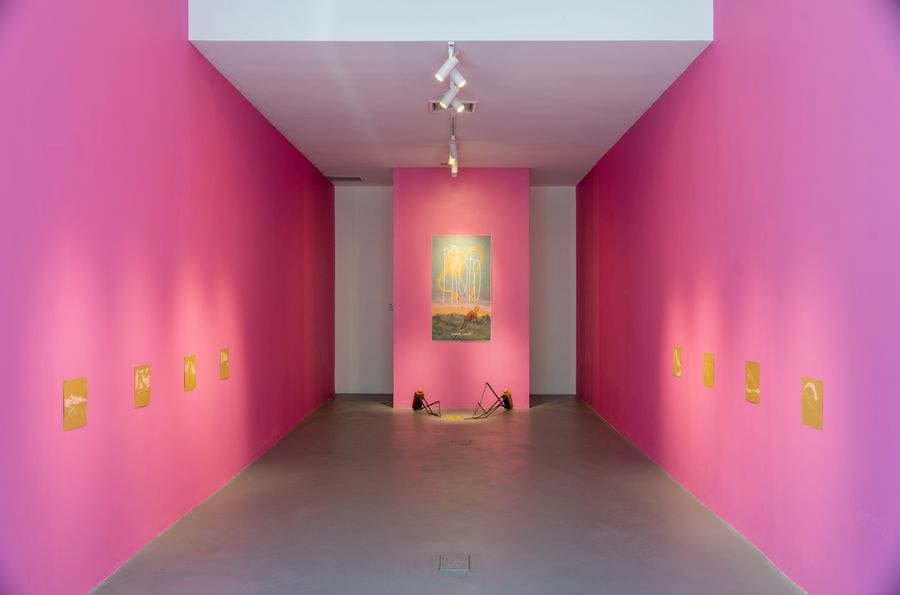

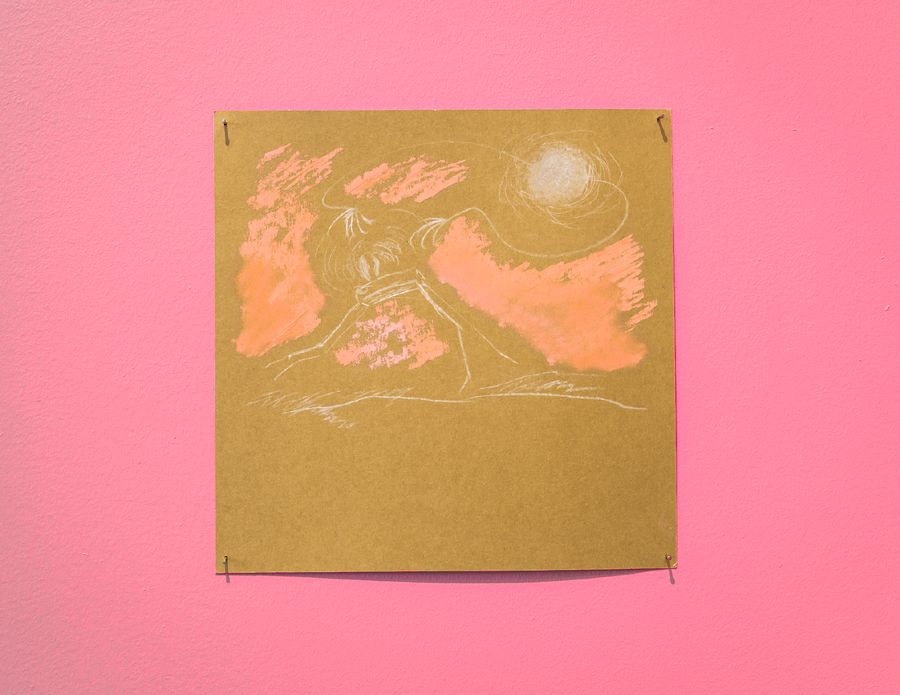
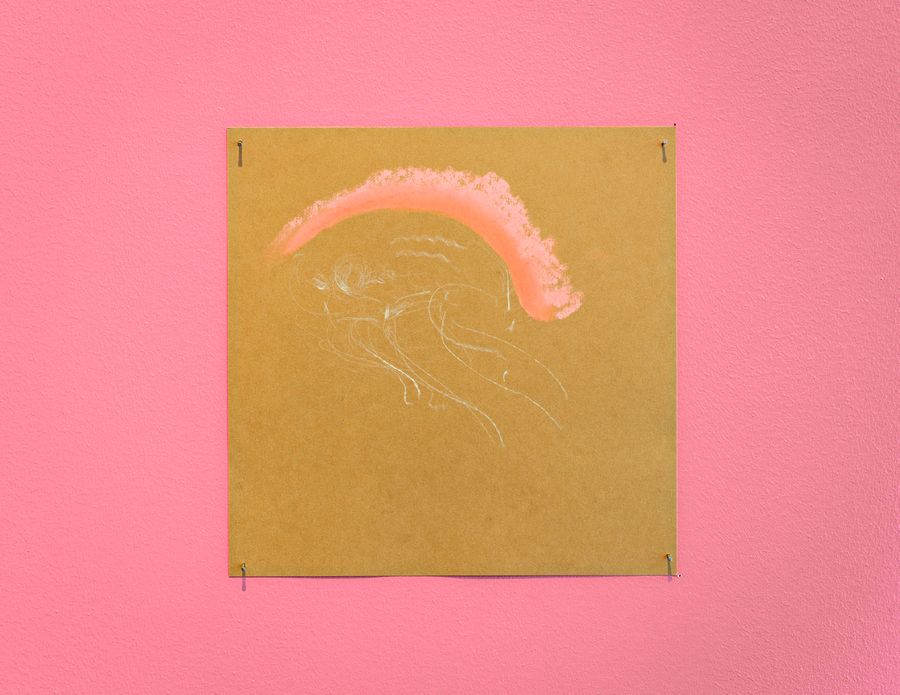
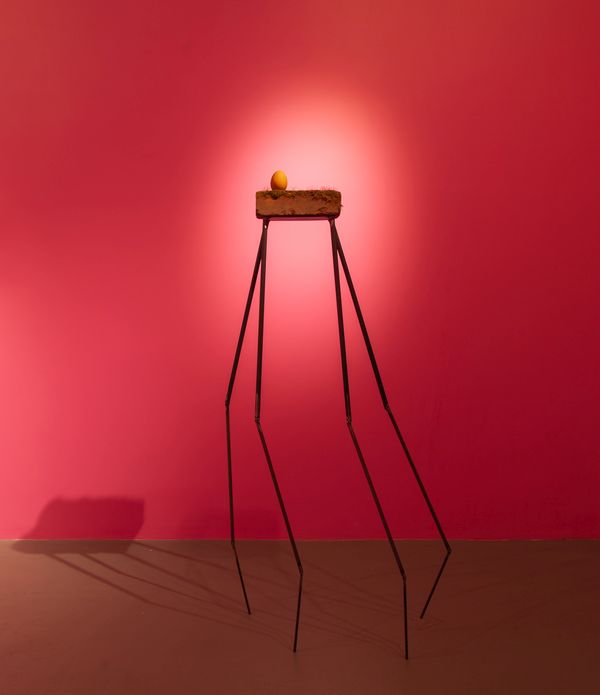
In the second room, we come across the promise of a film, the poster of Proto, a Greek prefix indicating preeminence. A familiar word is a prototype; also think of Protohuman (definition taken from a Spanish etymological dictionary): «Man of clay from which the human being was formed, the organism from which the human being arises». Or Protozoan (Oxford Dictionary): «A very small living thing, usually with only one cell, that can only be seen under a microscope».
This is the «furrow» Chaile draws. He is inventing an origin, conquering or reclaiming his ancestors. The poster is flanked by two sculptures that seem to have escaped from the preceding room, resembling creatures from some alien movie.
On the walls, a series of eight small drawings reminiscent of rupestrian art, composed of lines that set up and dismantle representation, pave the way for the link between past and future. This gesture dramatically shifts the reading: Chaile’s artwork is two-faced; it looks towards what was and what could be, converging in both directions.
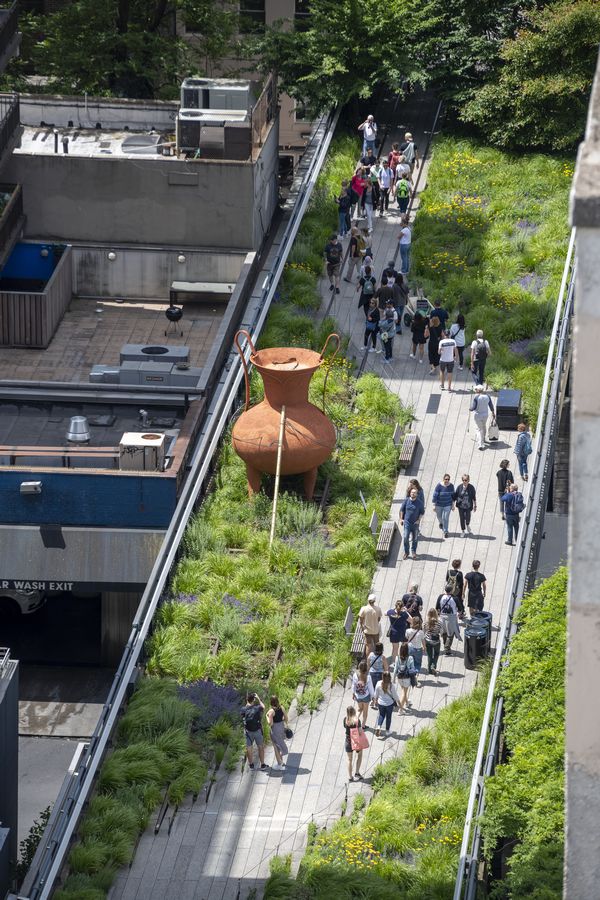
In addition to exhibiting at Barro NYC, Gabriel Chaile mounted a massive adobe sculpture on the High Line, conceived to be besieged by weather forces, same and different from the pieces inside the gallery. Outside, rain, snow, sun, and vegetation disrupt the piece’s identity.
The sculpture, which resembles a vessel for a primordial soup in which life would have been cooked, also nods to the female figure. Chaile engages with the history of art, both European and Latin American, in The Wind Blows Where It Wishes (as in all of his works). He additionally deals with the history of art before it began, that is, prehistory, archeology, and the vestiges of history to come.
It is worth mentioning before concluding that the title of the High Line sculpture and the Barro show are biblical references. The first is a quote from John (3:8), which says in full: «The wind blows where it wishes, and you hear the sound of it but do not know where it comes from and where it is going; so is everyone who is born of the Spirit». The other is found to the book of Daniel (12: 7) and to the book of Revelation (12:14), and it is currently used to characterize the method of interpretation of biblical prophecy.
Finally, the attentive observer will notice that in Chaile’s works there is precision and imprecision, science and magic, rituals and ceremonies, and that, at the same time, the pieces are inserted in the field of art. Because art, perhaps, is located somewhere, in an intermediate position between archaic knowledge tied to myth, and the scientific contributions of the last five centuries.
With Chaile’s works we are adrift; he provides us an impossible world that will not return or has not yet begun.
Time, Times, and Half Times continues at Barro New York until August 12. The Wind Blows Where It Wishes will be on view at The High Line through August 2024.
También te puede interesar
GABRIEL CHAILE & LAURA OJEDA BÄR: USOS Y COSTUMBRES
Gabriel Chaile (Argentina, 1985) colabora en esta ocasión con Laura Ojeda Bär (Argentina, 1986) para concebir “Usos y costumbres”, la exposición en Studio Voltaire (Londres) en la que convergen sus intereses sobre cómo ciertas...
BORN IN FLAMES: FEMINIST FUTURES
“Born in Flames” highlights a number of artists referencing non-Western folklore and mythologies to create alternate futures. Their works are representative of how each artist is thinking about futurism––including Afro-, Asian-, Indigenous-, and Latinx-futurism,...
VIVIAN CACCURI AND MILES GREENBERG: THE SHADOW OF SPRING
The artists invite audiences to experience how sound waves affect our bodies and to consider the manifold ideological, mechanical, spiritual, and symbolic aspects expressed by sound. With works that point to the unseen dimensions...

